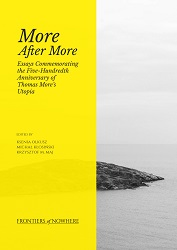
We kindly inform you that, as long as the subject affiliation of our 300.000+ articles is in progress, you might get unsufficient or no results on your third level or second level search. In this case, please broaden your search criteria.




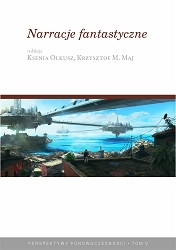
The inquiry delivered in Fryderyk Kwiatkowski’s chapter of possible affinities between ancient Gnosticism, perceived as an interpretative and heuristic category, and utopian/ dystopian texts has not been performed in comparative studies. The aim of this article is therefore to fill this void to demonstrate that gnostic thought is replete with notions that may have served as the verifiable pre-modern source of the constructive characteristics of utopias and dystopias. Alex Proyas, the author, examines "Dark City" (1998) as his primary case study for his investigative research on gnostic thought characteristics in utopias and dystopias. Other sources of his substantive research include twenty-first century American film. It is worthy to note that Proyas classifies all of his research sources as “gnostic dystopias”. Proya’s notion of “gnostic dystopias” refers to texts embedded with structural and narrative traits of classical examples of dystopias. Novels such as the likes of "Brave New World" by Aldous Huxley or "Nineteen Eighty- Four" by George Orwell can be construed as being literarily consistent with gnostic ideals.
More...
Monika Rawska’s chapter focuses on two modern movies "Equilibrium" (dir. Kurt Wimmer, USA 2002) and "Inception" (dir. Christopher Nolan, USA—Great Britain 2010) with an analysis of the city spaces depicted in these films. Progress is the basis of the analysis. Progress is the impulse pervasive in utopias and it is an important motivator for human actions presently perceived as negative—imperialism, colonialism, racism. Margaret Mead’s notion that Utopia should be seen as a historical category while revealing an essential ambivalence is well summarized in her work, “One man’s dream is another man’s nightmare”. This is also represented in select films depicting a new society with a visual representation of order. For example, in Libria and architect’s city both of which were created with a positive and beneficial premise, though over time they became a burden for the characters. Change in perception of reality is one of the significant elements in dystopian narratives, that are also present in film adaptations, in what Ludmiła Gruszewska-Blaim calls a „utopiacrime”. Libria is depicted as the only city in the world in the film, "Equilibrium". Libria is a dystopian cityfortress contrasted with the surrounding Nether and an appropriated enclave space of Offenders. It functions as a simulacrum of the past at a time before the war. The film vision of the future is an intertextual collage of conventional representations of the totalitarian organization of both space and society. Dream city is the creation of an architect couple in the film, "Inception". It is a very different space, imagined and fictional and it perfectly captures the impossibility of utopia as revealed by its very name that means non-space. Reality, which the couple created for themselves, demonstrates an interesting tension between the architectural utopia and the solitary eutopia as well as a conflict of planner vs. wanderer (as described by Michel de Certeau). In both movies the city space becomes a threat in spite of its projected function as a safe and/or familiar space. In "Equilibrium", it imposes on and disciplines its inhabitants as tools of the state. In Inception, the city is the accumulation of the protagonists’ entire world and it turns unto its own ruin, a memory maze swallowed by the sea.
More...
Maciej Gaździcki’s chapter deconstructs "RoboCop"—the eponymous knightly hero of Paul Verhoeven’s original film and subsequent installments in the franchise—including the world he exists in, through a medievalist perspective. Gaździcki discerns between Robocop’s role as either a futuristic knight or merely caricaturesque animated armour. Relevant and explicit similarities are made and analyzed between Verhoeven’s crime-fighting hero and the characters from Chansons de Geste, Arthurian legends, and hagiographic stories (otherwise known as loricati). The author also includes connections to works based on medieval chivalric epics. Concluding, Gaździcki attempts at finding parallels between the latest incarnation of Robocop and the Middle Ages.
More...
In this chapter, Krzysztof Uniłowski analyzes the function of historical allusions in Sapkowski’s pentateuch on the adventures of Geralt the Witcher and his companions. The saga is said here to allude to the Second World War, but also to the Germanic invasion of Britain in the fifth and sixth century, including the colonization of North America by Europeans. In addition, the series is viewed as featuring clear literary references to the historical novels of Henryk Sienkiewicz, Arthurian tradition, or texts based on Indian Wars. All these allusions defy Sapkowski’s allotopia and emphasize— just like the creative irony of Romanticism—the dependence of allotopian world on the writer’s creativity. At the same time, history functions like a prop room with plenty of motives, threads, and figures. From this perspective, fantasy literature confirms Fredric Jameson’s thesis that western societies have lost a sense of history. Nevertheless, in the light of peripheral character of the Polish culture, it can also mean freeing from the burden of history, or, to speak more precisely, from phantasmal imaginations. As an author, Sapkowski is conscious that we have lost the historical experience from our perceptive horizon as the most traumatogenic events of the twentieth century did not teach us anything. He further points out that what has been repressed, may always return. And it returns even in the frames of fantastic convention.
More...
In the chapter “Queering Frankenstein: the motifs of otherness and non-normativity in »Penny Dreadful«”, Barbara Braid offers an interpretation of Frankenstein’s creatures presented in the series from the perspective of queer theory. The queer is understood here as a wide range of non-normativity and difference, including subjectivities and actions which subvert stabilities and norms. The author identifies the links between queer theory and the gothic, which allow to see the characters which are monstrous, undead, abject—or simply Other—as representations of difference. In this light, the presented analysis shows the three creatures made by Frankenstein and Victor Frankenstein himself as characters related to each other in non-normative ways, creating a queer quasi-family. This discussion is also contextualized by references to Mary Shelley’s original novel and some of its classic film adaptations and their comparison with Penny Dreadful. Frankenstein’s creature is, due to its nature as the undead made of fragments of corpses, an abject thing, an embodiment of Otherness. In the series, Victor creates three beings, which are in a constant tension with each other. The firstborn John Clare murders the second creature, Proteus, out of hatred for their “father” Victor; the third being is Lily, another embodiment of the Bride of Frankenstein, destined to be with the creature, but desired by Victor. She becomes a dangerous fiend, femme castratrice, who desires a new world order and subordination of human beings. These two surviving Others—John and Lily—represent two different attitudes to their otherness. John Clare yearns normality and tries to achieve it by establishing a family with a human woman; Lily, a demonic man-eater, terrifies him. On the other hand, Lily strikes a relationship with Dorian Gray, equally non-normative, in order to achieve a queer monstrous supremacy over the world. However, both Frankenstein’s creatures fail and become alone. Therefore, the chapter is concluded with suppositions that question whether the motifs of otherness play an unequivocally subversive role in Penny Dreadful.
More...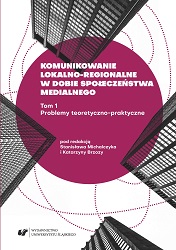
This article aims at examining the rhetorical strategy employed by the editorial board of the „Śląsk Literacki” quarterly as well as at reconstructing the historical context. The journal was published between 1952 and 1956; it was a part of the Katowice branch of the Polish Writers’ Union, but it also promoted writers from the area of Opole. Adopting a rhetorical perspective makes it possible to focus on the persuasive aspect of the texts published in the quarterly. Following Aristotle’s theory, modes of persuasion have been divided into three groups: logos, pathos, and ethos.
More...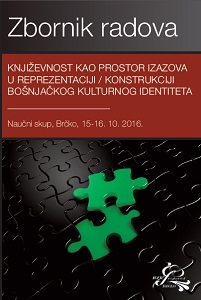
Literary creation in Bosnia-Herzegovina is very complex. Viewed as a whole and throughout its historical duration, it has not been realized within the framework of one nation or one ethno-national community, nor within only one language or only one alphabet, nor within the framework of only one cultural-civilizational circle. This fact and this kind of literary-historical and cultural-historical reality gives the basis from which it is now possible to talk about a unique, singular literature of Bosnia-Herzegovina, or Bosnian-Herzegovinian literature, and also about parallel, plural literatures of Bosnia- Herzegovina – Bosniak as well as Croat and Serbian literatures in Bosnia-Herzegovina, together with the literary traditions of Bosnian-Herzegovinian minority communities, such as the Jewish community and others. Also, it is possible to speak about a phenomenon that should – given its own, internal historical-developmental dynamics and its literary-developmental principles and relationships in general – probably be named the Bosnian-Herzegovinian interliterary community. Related concerns are necessarily reflected in the definition of Bosnian literary studies and in particular in the definition of cultural Bosnian literary studies. Bosnian literary studies, and especially cultural Bosnian literary studies, can not, in fact, be defined using the principle of one language – one literature – one nation – one culture, nor in the framework of a single state, because this principle does not correspond to the historical reality of the literary creation nor to what is the contemporary reality of literary practice in Bosnia-Herzegovina. That is why, in understanding the phenomenon of literary creativity in Bosnia-Herzegovina, as well in defining both Bosnian literary studies and cultural Bosnian literary studies, primarily the theoretical concepts of interliterariness as well as closely related concepts of interculturality occur as potential solutions, as – both of them – have their essential meaning and full realization in the cases of both literary and culturally complex phenomena like literature in Bosnia-Herzegovina in general, as well as Bosniak literature in particular.
More...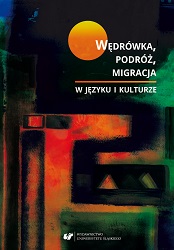
The author discusses the subject of collective memory understood metaphorically as a journey (stages, equipment, wanderers) as well as mechanisms of memory based on nomadic motifs. Those nomadic motifs, which consist of the schematic and individualizing elements, are connected to particular types of collective memory: communicative and cultural; functional and accumulative. The role of those nomadic motifs in collective memory has been showcased on the basis of contemporary variations of the story of Cinderella.
More...
The article is concerned with descriptions of fictional worlds through proper names in fantasy texts, in which one of the main motifs is the journey of the characters to places regarded as possible worlds. The reader becomes gradually familiar with the world of the story thanks to the characters performing their roles in this created reality, through the analysis of the quest narrative, characteristic of fantasy texts. This, in turn, is facilitated through description, maps, and onimic practices. Proper names in fantasy texts are usually compounded from comprehensible units, elements of Old Polish and semantically unclear forms alluding to foreign languages (e.g. „Dająca Wzrok” – „Sight Giver”; „Twardokęsek”, „Emhyr var Emreis”). Such varied onomasticon reinforces the egzomimetic space created by the author in the works of epic fantasy.
More...
The aim of the article is to provide genre characteristic of the subgenre of a guidebook called a city walkbook. The study is based on the example of a book by Sylwia Chutnik, „Warszawa kobiet” [„The Warsaw of Women”]. The conducted analysis has shown that in each of the aspects – structural, pragmatic, epistemic, stylistic – the guidebook, apart from the typical elements, includes also several nonstandard elements. Their presence within the book is motivated by a pragmatic factor, i.e. a communicative intention which consists in reclaiming the space of women in social consciousness.
More...
The article discusses the migration strategies of the internet meme in linguistic genre perspective. This particular genre has been growing in popularity among the Internet users, while at the same time retaining its characteristic architecture, which makes it possible to establish a fairly consistent standard. Its commonality in the cyberspace is influenced by, among others, the way it migrates and disseminates among the Internet users, illustrated through the metaphor of the virus. This viral nature of the meme, which becomes almost pandemic in media communication which reaches across cultural and spatial borders, manifests itself in the unique constellation of text‑formation elements, whose organization enhances to construct of the message and decides the genre, as well as in the particular sender‑receiver combination. The differentiation of particular genre characteristics remains key for the present analysis, as those characteristics enable the deployment of the abovementioned viral migration strategy. The research material – which comprises texts available on the most popular Polish internet websites – is analyzed through the lens of textual and linguistic genre analysis, which allows to emphasize the characteristics of the pattern, which are based on the idea of constant dynamic movement and migration.
More...
Unique copies of school chronicles consist a valuable part of local documentation heritage. In many cases, their significance becomes even more pronounced, given that – contrary to many historical documents – a lot of them survived the times of unrest. A school chronicle regarded as a text of culture belongs, in its material aspect, to the group of the so‑called remembering objects, and in its nonmaterial aspect, it sheds new light on the process of uncovering and interpreting or reinterpreting of the cultural past. From this perspective, school chronicles allow not only to construct a timeline of the local history, but also constitute one of the foundational elements of public discourse. As a historical source, school chronicles remain rather underutilized. Such chronicles, once upon a time, existed in all educational facilities, as they constituted an important document. Contemporarily, the presence of such chronicles in schools is more of a tradition, since chronicles ceased to perform their reporting and evaluating functions, and transformed into a kind of occasional writing.
More...
The aim of the article is to direct the attention of the public to the heretofore neglected relationship between the popular volume of the sermons of Peregryn of Opole and the bourgeoning anti‑heretical discourse of the turn of the 13th century, in which the Dominican Order remained deeply involved. The article focuses on the figure of the author mainly in the context of the activity of the Inquisition, but also in the context of the secular reforms of the Fourth Council of the Lateran, which adopted a polemic stance with regard to insubordinate devotion.
More...
The article presents the figure of an esteemed classical philologist, historian of literature, translator and teacher at the secondary schools in Przemyśl and Lvov, Stanisław Schneider (1858–1917). His translatorial debut consisted of “excerpts from ancient poets.” He translated Homer, Horace, Ovid and Vergil. The collected works were then published in „The Report of the Headmaster of the Imperial‑Royal Secondary School in Przemyśl for the School Year 1888”. It was the third full translation of Ovid’s „Metamorphoses” into Polish (after the 17th‑century translations by Jakub Żebrowski and Walerian Otwinowski). Moreover, the article contains excerpts from Schneider’s translation of Ovid’s „Metamorphoses”.
More...
The report discusses the ideas of the American professor of law and literature Stanley Fish and how they can help us to realize not only the place of humanities today but also the usefulness of literary activities for the dense picture of life. Examples include discussions on John Milton's works as well as Bulgarian literary works.
More...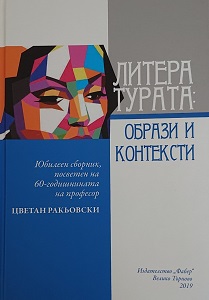
It is generally acknowledged that the fundamental anthropological modus of walking once transformed from a necessary and indispensable human activity into a matter of individual choice, emerged as ideology and was simultaneously appropriated into the realm of „the fictive and the imaginary“ (in W. Iser’s terminology), which brought about the conceptualization of the literary peripatetic. Meanwhile, attributed to that same modern ideology was an ancient legacy traced back to Aristotle’s school of philosophy. The paper is concerned with the re-actualization of the peripapetic in Modernism – that is to say, with the conceptual, cultural, and textual aspects ofwalking, represented in modernist novels, evaluated in the perspective of the alternating historical, ideological, aesthetic, philosophical, and poetical contexts, that construct the complex narrative rationalizing the interconnectedness between walking and thinking, and walking and writing.
More...